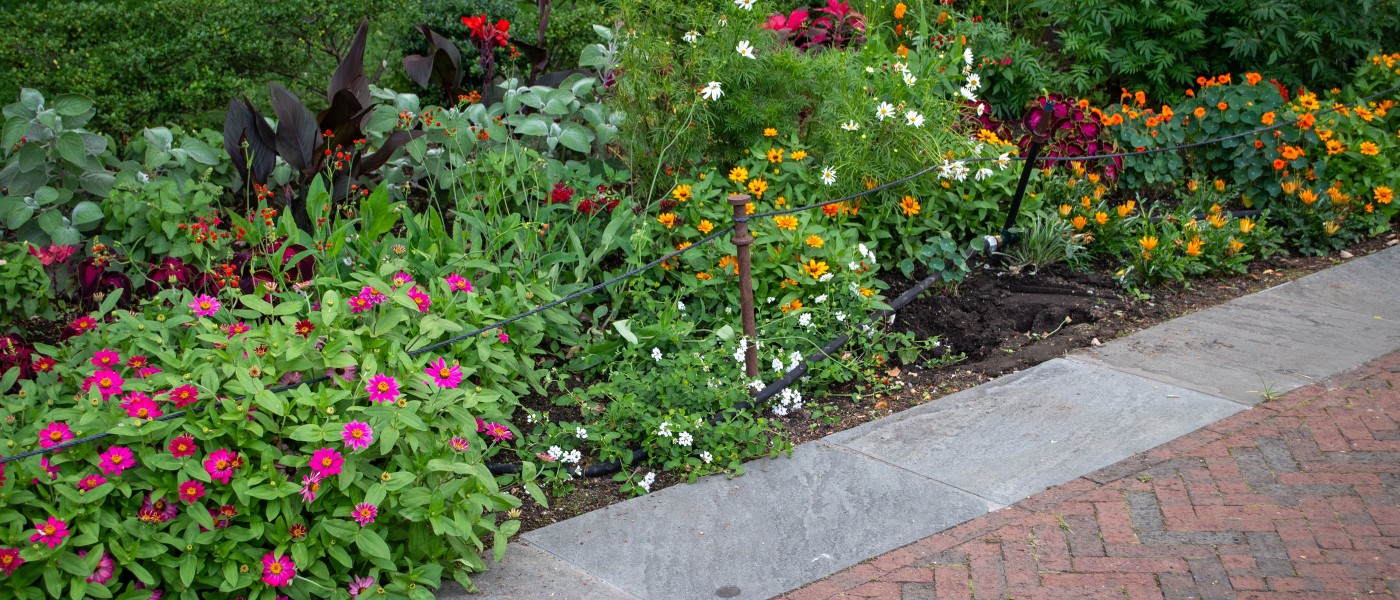A Rainbow Lights Up the Annual Border
The Annual Border is coming into its summer glory in a full spectrum of color that echoes this spring’s tulip display.
“The return of the tulips, after three years of daffodils, really marked the return to a broader range of colors I could use,” says gardener Wayken Shaw, who curates Magnolia Plaza, Lily Pool Terrace, and the Annual and Perennial Borders. What better way to celebrate this than with a sweeping rainbow of blues, greens, yellows, oranges, reds, and purples?
The display features around 70 different annual plant cultivars, from begonias and petunias to fuzzy floss flowers (Ageratum houstonianum ‘Blue Bouquet’), bright red cockscomb (Celosia argentea ‘Sunday Cherry’), and even kale and banana plants (Brassica and Musa spp., respectively).
“The rainbow is a sign of hope, new beginnings, and equality, among other things,” says Shaw. It also offers a neat tie-in to the Garden’s Power of Trees exhibition and program series. As Shaw thought about stories he could tell about trees through the Annual Border’s design, he began to read about the visible light spectrum—the colors we can see—within the electromagnetic spectrum.
The visible spectrum is the part of the electromagnetic spectrum involved in photosynthesis, and different colors, or wavelengths, affect the growth of plants in different ways, including trees and the plants that thrive in their shade.
Canopy trees, for example, which get full sun, “are absorbing a lot of red light,” says Shaw. The wavelengths of light that are not absorbed by these canopy leaves filter down to the understory plants below. You can find shade-tolerant plants like taro (Colocasia spp.) in the shadier parts of the Annual Border.
Want to learn more? Head over to Lily Pool Terrace to enjoy the Annual Border’s colorful display (and the attendant bees and butterflies!), and to read descriptions of how plants use the different colors of the rainbow.


